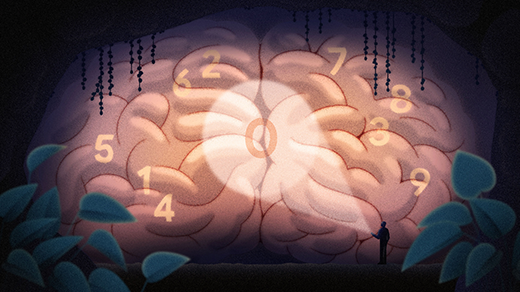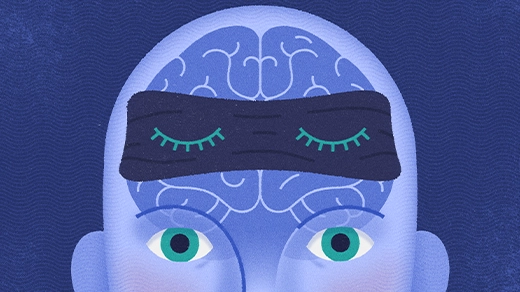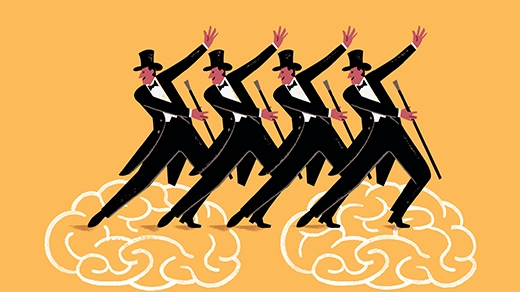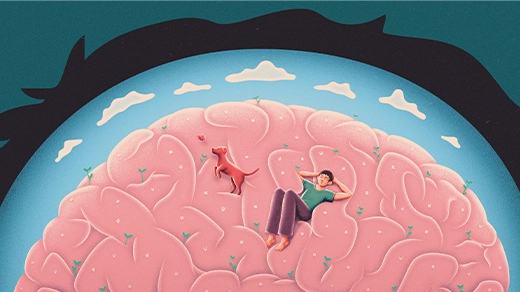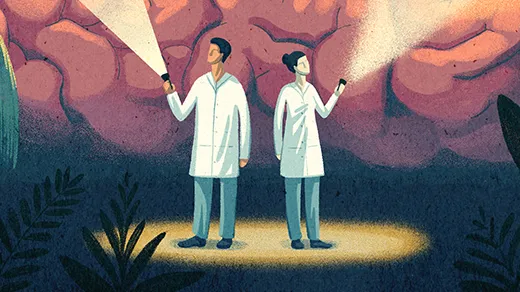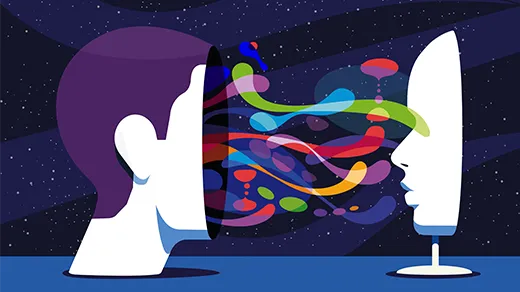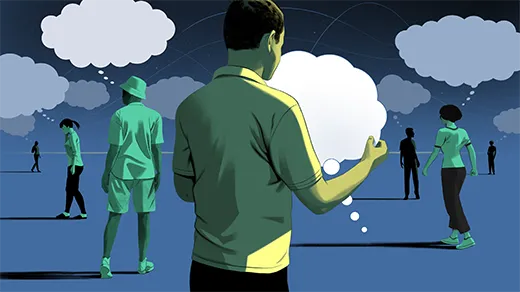What's up in
Cognition
Latest Articles
How the Human Brain Contends With the Strangeness of Zero
Zero, which was invented late in history, is special among numbers. New studies are uncovering how the brain creates something out of nothing.
What Happens in a Mind That Can’t ‘See’ Mental Images
Neuroscience research into people with aphantasia, who don’t experience mental imagery, is revealing how imagination works and demonstrating the sweeping variety in our subjective experiences.
Can Psychedelics Improve Mental Health?
Research suggests that psychedelic drugs can reopen critical periods of brain development to create opportunities for re-learning and psychological healing. In this episode, co-host Janna Levin speaks with Gül Dölen, a neuroscientist studying the therapeutic potential of psychedelic substances.
The Social Benefits of Getting Our Brains in Sync
Our brain waves can align when we work and play closely together. The phenomenon, known as interbrain synchrony, suggests that collaboration is biological.
What Your Brain Is Doing When You’re Not Doing Anything
When your mind is wandering, your brain’s “default mode” network is active. Its discovery 20 years ago inspired a raft of research into networks of brain regions and how they interact with each other.
Why the Human Brain Perceives Small Numbers Better
The discovery that the brain has different systems for representing small and large numbers provokes new questions about memory, attention and mathematics.
What a Contest of Consciousness Theories Really Proved
A five-year “adversarial collaboration” of consciousness theorists led to a stagy showdown in front of an audience. It crowned no winners — but it can still claim progress.
What Is the Nature of Consciousness?
Consciousness, our experience of being in the world, is one of the mind’s greatest mysteries, but as the neuroscientist Anil Seth explains to Steven Strogatz, research is making progress in understanding this elusive phenomenon.
Is It Real or Imagined? How Your Brain Tells the Difference.
New experiments show that the brain distinguishes between perceived and imagined mental images by checking whether they cross a “reality threshold.”
